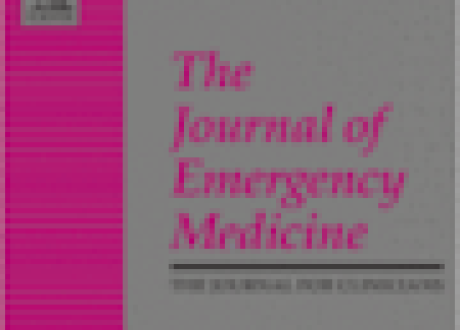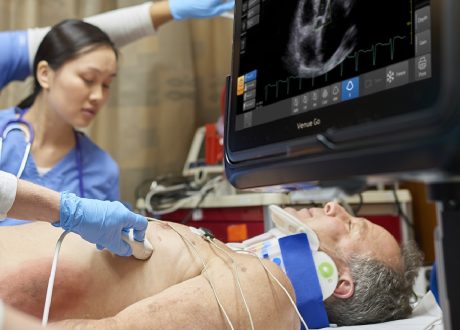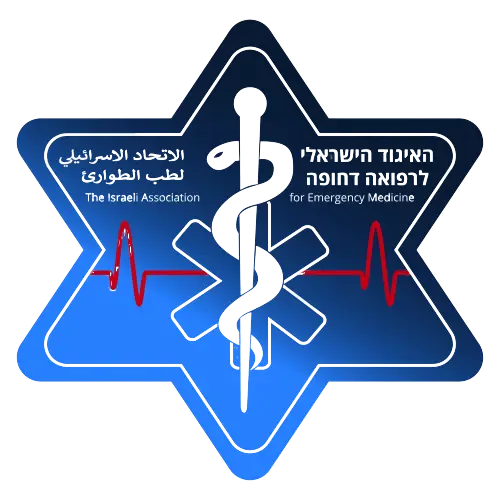Podcast: Play in new window | Download
“This learning material is sourced from Emergency Medicine Cases and has been published here with permission as per creative commons copyright”
EM Quick Hits 50 Normal Unenhanced CT Renal Colic DDx, Perichondritis, Magnesium in Pediatric Asthma, Steroids for Pneumonia, OMI Cath Lab Activation
Topics in this EM Quick Hits podcast
David Carr on differential diagnosis of normal unenhanced CT renal colic (0:38)
Leeor Sommer on recognition and management of perichondritis and auricular abscess (19:59)
Suzanne Schuh on IV magnesium sulphate for pediatric asthma (27:57)
Jess McLaren on Occlusion MI ECG interpretation requiring cath lab activation (39:08)
Justin Morgenstern on update on steroids for pneumonia (44:50)
Podcast production, editing and sound design by Anton Helman
Podcast content, written summary & blog post by Shaila Gunn & Alex Chan, edited by Anton Helman
Cite this podcast as: Helman, A. Carr, D. Schuh, S. Sommer, L. McLaren, J, Morgenstern J. EM Quick Hits 50 – Normal Unenhanced CT Renal Colic DDx, Perichondritis, Magnesium in Pediatric Asthma, Steroids for Pneumonia, Chest Pain ECG. Emergency Medicine Cases. July, 2023. https://emergencymedicinecases.com/em-quick-hits-july-2023/. Accessed July 20, 2023.
Renal infarct – an often missed diagnosis that if diagnosed could prevent a stroke
Flank pain is a common emergency presentation and common pitfall is premature closure, assuming that obstructive nephrolithiasis is the diagnosis; when the unenhanced CT KUB is negative – the flank pain often gets diagnosed as “MSK flank pain” which has a similar clinical picture of sudden onset flank pain that resolves over days. In patients with sudden flank pain whom unenhanced CT is negative for nephrolithiasis, and alternate diagnoses such as leaking AAA, aortic dissection, pulmonary embolism, spinal pathology etc. have been ruled out, renal infarct should be suspected.
Why do we care about renal infarct? Secondary prevention! Most are thromboembolic in origin. It is important to identify the cause, such as atrial fibrillation. Missing a renal infarct may be a missed opportunity to start patients on anticoagulation for stroke prevention. The clinical presentation of renal infarct can be thought of as “the mesenteric ischemia of flank pain”: unexplained severe flank pain in patients with a history of atrial fibrillation should be thought of similarly to unexplained severe abdominal pain in patients with a history of atrial fibrillation, in whom mesenteric ischemia should be considered.
The incidence of renal infarct is 1.4% in the general population and 2% in those with atrial fibrillation. Risk Factors to increase pre-test probability of renal infarction include:
-
- Cardiovascular risk factors
- Autoimmune disorders
- Connective tissue disorders such as Marfan’s Syndrome
- Hypercoagulable states such as malignancy
- Endocarditis
- History of atrial fibrillation
- Active or recent infection
Work-up if renal infarct is suspected: the majority of acute renal infarcts (91%) will have isolated Lactate Dehydrogenase (LDH) elevation without evidence of hemolysis or elevation in other transaminases, and a definitive diagnosis can be made with contrast-enhanced abdominal CT. Work up outside of the ED should include an echo, Holter monitor, and a hypercoagulability workup.
=>Bottom line: Renal Infarct should be on your differential diagnosis, and consideration of a screening LDH done, for patients who present with renal colic and have a normal unenhanced CT, because most of these will be thromboembolic. If you identify the renal infarct from this cause and anticoagulate them, you could prevent a stroke.
Perichondritis and auricular abscess – a special soft tissue infection requiring specific treatment
- Perichondritis is an infection of the connective tissue of the ear that almost always includes the cartilage
- A common pitfall is to misdiagnose perichondritis as a simple cellulitis
- Perichondritis is most often caused by ear piercings through the cartilage, burns and other minor trauma
- The most common organism involved is Pseudomonas (75% of inflections) followed by S. aureus.
- Treatment should include an Pseudomonal agent +/- S. aureus coverage. A common combination is ciprofloxacin +/- cephalexin.
- Perichondritis may be complicated by an abscess of the pinna.
- Cartilage is avascular; if the cartilage and soft tissue become separated this may lead to necrosis of the cartilage resulting in a irreversible cauliflower ear.
- When draining an abscess of the pinna, the potential space must be closed to prevent necrosis. There are 2 techniques that can be used:
- Suturing 2 dental rolls on either side of the pinna
- Tight dressing with Vaseline, gauze, and cling
- Abscesses of the pinna necessitate ENT follow up

Perichondritis with auricular abscess
Bottom line => 3 High-yield tips on the management of auricular abscess and perichondritis
- For peri-auricular infections such as perichondritis, anti-pseudomonal coverage should always be considered, with ciprofloxacin being a reasonable first-line agent in addition to S. aureus coverage
- If a subsequent auricular abscess occurs, prevent the development of deformities and cauliflower ear by ensuring urgent and complete drainage of the abscess
- Following drainage, ensure that the skin is re-approximated to the pinna either by a tight conforming dressing to the ear, or suturing a dental roll on either side of the pinna
Episode 38: ENT Emergencies Pearls, Pitfalls, Tips and Tricks
EMU 365: Pediatric Asthma Pearls and Pitfalls
Deep dive review of perichondritis on REBEL EM
IV Magnesium Sulphate for pediatric asthma – despite weak evidence it should be considered early in severe and refractory cases
MgSO4 is a weak bronchodilator that is often used after the usual therapy of steroids and bronchodilators in pediatric asthma; it is currently recommended in some pediatric acute asthma guidelines and international asthma guidelines for severe or refractory asthma. However, there is a lack of high-quality evidence showing clear benefit; there are 3 RCT’s with 115 patients:
- Ciarallo et al. 1996
- P: 31 children aged 6-18 years with moderate-severe asthma.
- I: 25 mg/kg IV MgSO4 over 20 minutes (max 2 g)
- C: 100 cc saline solution.
- O: Improved peak expiratory flow based (% change from baseline), FEV1, and FVC, and decreased admissions.
- Ciarallo et al. 2000
- P: 30 children aged 6-18 years with moderate-severe asthma.
- I: 40 mg/kg IV MgSO4 over 20 minutes (max 2 g).
- C: Saline solution of equivalent volume.
- O: Improved peak expiratory flow based (% change from baseline), FEV1, and FVC, and decreased admissions.
- Scarfone et al. 2000
- P: 54 children aged 1-18 years with moderate-severe asthma.
- I: 75 mg/kg IV MgSO4 (max 2.5 g).
- C: Saline solution.
- O: No significant differences to admissions or pulmonary index score.
The disadvantages of IV-magnesium administration include:
- High labour intensity of nursing staff during a 30-minute infusion period
- Requirement of 2-3 hour post-administration monitoring
- A potential for hypotension (occurs in 6-8% of patients and may be prevented with fluid bolus prior to administration)
- Requirement of IV access, which can worsen respiratory distress in children
Do all children who receive IV magnesium for asthma require admission?
- In practice, administration of MgSO4 often prompts admission; the probability of admission after adjusting for multiple risk factors is 9x higher in those who received MGSO4 than those who did not. A survey of physicians indicates this is because of the lack of evidence that it is safe to discharge them home.
- Evidence from retrospective studies suggests there is likely no reason to admit patients who respond well; children who are discharged home after MgSO4 may return to the ED at a lower rate than those who do not.
Despite its disadvantages, IV magnesium is a relatively safe and accessible therapy that should be considered and given early:
- Immediately on presentation in children with an initial PRAM score > 12 or
- Within 1 hour of initial steroid and bronchodilator therapy in children with a PRAM score between 8 and 11.
- Administration: IV over 20-30 minutes under the supervision of a nurse who is familiar with the hospital protocol
=>Bottom line: The evidence for MgSO4 in pediatric asthma is quite weak. IV MgSO4 should be considered in children with a PRAM score of 12 on presentation and within 1 hour of other treatments given in children with a PRAM score between 8 and 11. Not all children who receive MgSO4 in the ED require admission to hospital.
Occlusion MI cath lab activation – ECG highlights in ACC statement on chest pain evaluation
- In the 2022 ACC expert consensus on chest pain evaluation, it was determined that using STEMI ECG criteria alone will miss up to 40% of patients with acute coronary occlusion, as it is neither sensitive nor specific for acute occlusion
- They suggest the following ECG findings be considered for acute coronary occlusion and cath lab activation:
- Hyperacute T waves: broad and bulky, look inflated, large relative to QRS

- Mild ST elevation with reciprocal depression in aVL
- Anterior ST depression (posterior MI) even in the absence of posterior lead ST elevation
- De Winter Sign – upsloping ST depression rising into hyperacute T wave

- LBBB or paced rhythm with Smith-Modified Sgarbossa Criteria.
- Hyperacute T waves: broad and bulky, look inflated, large relative to QRS
=>Bottom line: Hyperacute T waves, subtle ST elevation with reciprocal change in aVL, anterior ST depression of posterior occlusion MI even if the posterior leads don’t show ST elevation, De Winter’s sign, and Smith-Modified Sgarbossa should all be considered for cath lab activation
ECG Cases 41 – STEMI, Occlusion MI Complications
When are steroids for pneumonia indicated based on the latest evidence?
Corticosteroids may have a mortality benefit for a subset of patients with severe pneumonia
The CAPE COD Trial and the ESCAPe Trial published conflicting evidence for the benefit of steroids in pneumonia.
CAPE COD Trial (Dequin et al. 2023)
- P: Multi-center trial with 800 ICU patients with severe CAP.
- I: Hydrocortisone infusion 200 mg daily for 4 or 7 days with a taper of 8-14 days.
- C: Placebo.
- O: 5% absolute decrease in mortality in those receiving hydrocortisone.
ESCAPe Trial (Meduri et al. 2022)
- P: 600 ICU patients with severe CAP.
- I: Methylprednisolone initially 40mg bolus then 40mg/day for 7 days followed by a taper for a total of 20 days.
- C: Placebo.
- O: No difference in 60 day mortality.
EBM critical appraisal
- Publication bias: The CAPE COD trial was published in a more prestigious journal in less than 1 year whereas it took the ESCAPe trial 6 years to get published – it is harder to have negative results published.
- Papers are never just positive or negative.
- The ESCAPe Trial did show a trend towards a positive result, though it was not statistically significant.
- The CAPE COD Trial ended early which may have inflated their results.
- These trials only apply to CAP. For example, the CAPE COD Trial excluded those with influenza, aspiration pneumonia, fungal pneumonia, TB, septic shock.
There is still some clinical uncertainty regarding the use of steroids in patients with CAP. There is likely a small mortality benefit of steroids in patients with CAP. Steroids are associated with significant side effects and harms may outweigh the benefit in some patients.
=>Bottom line: Consider steroids for Community Acquired Pneumonia (not atypical pneumonia, hospital acquired pneumonia, or aspiration pneumonia) in patients being admitted to ICU.











